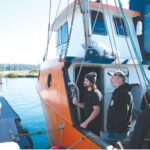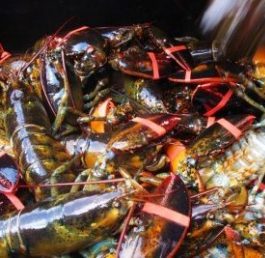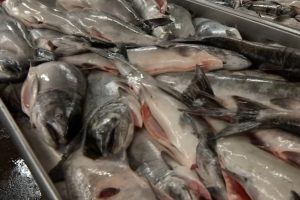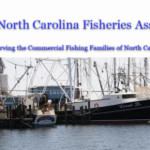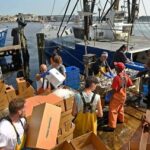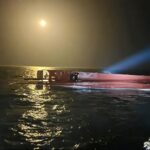Tag Archives: National Marine Fishery Service

#FishermensLivesMatter: Until this pandemic is over, say no to fishery observers being placed on fishing vessels
On July 1st the Trump Administration’s agency, NOAA will require that fishing vessels resume taking fishery observers on their fishing trips. Due to the Coronavirus pandemic these activities have been suspended for almost three months due to the danger of spreading the deadly disease among the
fishing industry and their families. Fishery observers are required by National Marine Fishery Service regulations to observe commercial fishing operations in almost all of our countries fisheries based on various criteria that include likelihood of interaction with marine mammals or other protected species, amount of bycatch in each fishery, adherence to regulations, and anything else they can justify to support this huge taxpayer money gobbling con game they have created. >click to read< by Jim Lovgren #FishermensLivesMatter 22:27

Fishery observer survey seeks answers for high turnover
Many of Alaska’s (and the nation’s) commercial fisheries depend on observers having a place on board, but fewer than a fifth of them feel appreciated by the industry, according to a new survey. Fishery observers sail on vessels with fishermen in federal waters and keep track of catch and bycatch and take biological samples throughout trips. Managers use this information to evaluate stocks and manage fisheries. The job can be tough, requiring up to a month at a time on the water in rough conditions, and turnover can be high. The survey, conducted by the National Marine Fishery Service in 2016, asked 553 observers why they did the job and what their experiences have been like. >click to read<16:13
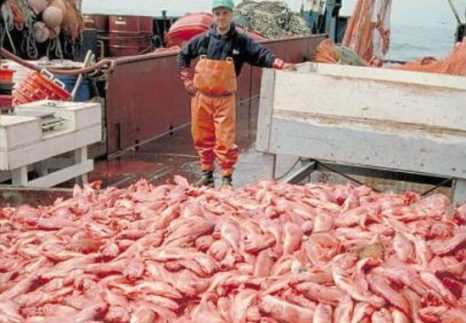
Pacific Ocean perch stock declared rebuilt
An important, though overfished groundfish stock has been declared rebuilt, the Pacific fishery Management Council announced Monday. Pacific Ocean perch has been an overfished stock since the mid 1960s when they were targeted by foreign fishing fleets, said John DeVore, groundfish staff officer for the Pacific fishery Management Council. This declaration will mainly be felt by the commercial trawl fishery north of Cape Mendocino, he said. click here to read the story 10:18
Proposal For At Sea Observers Could Further Hurt U.S. Purse Seiner Fleet
 A new fishery rule that the federal government is moving to implement is expected to deal another financial blow to the US purse seiner fleet, which is already faced with stiff competition from foreign vessels such as the Chinese fleet, who are subsidized by their government, China. US National Marine Fishery Service (NMFS) has proposed a rule which would require Observers to be on board US purse seiners fishing in the western and central Pacific ocean (WCPO). The proposal was issued last week under authority of the Western and Central Pacific Fisheries Convention Implementation Act. It is a three-pronged proposed rule, which includes a move to establish restrictions in 2016 and 2017 on the use of fish aggregating devices (FADs) by U.S. purse seine vessels in the WCPO; and to establish limits in 2016 and 2017 on the amount of bigeye tuna that may be captured by U.S. longline vessels in the WCPO. Read the rest here 11:54
A new fishery rule that the federal government is moving to implement is expected to deal another financial blow to the US purse seiner fleet, which is already faced with stiff competition from foreign vessels such as the Chinese fleet, who are subsidized by their government, China. US National Marine Fishery Service (NMFS) has proposed a rule which would require Observers to be on board US purse seiners fishing in the western and central Pacific ocean (WCPO). The proposal was issued last week under authority of the Western and Central Pacific Fisheries Convention Implementation Act. It is a three-pronged proposed rule, which includes a move to establish restrictions in 2016 and 2017 on the use of fish aggregating devices (FADs) by U.S. purse seine vessels in the WCPO; and to establish limits in 2016 and 2017 on the amount of bigeye tuna that may be captured by U.S. longline vessels in the WCPO. Read the rest here 11:54
National Marine Fishery Service Reduces Common Pool Gulf of Maine Cod Limits to ZERO!
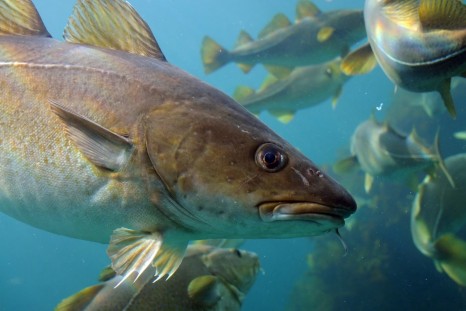
NEFMC fails to tackle cod problem – “We’re losing the rest of that value to protect one stock that is highly romanticized,”
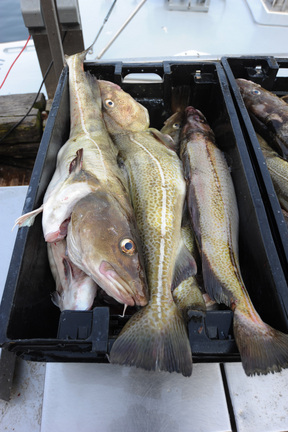 Josh Wiersma, who manages two New Hampshire fishing sectors with 14 fishing vessels, said fishermen get $100 million a year catching groundfish species like cod, haddock and flounders, but only $5 million of that comes from cod. His fishermen, he said, have been able to make a living catching other species like Pollock, redfish and hake. “We don’t think cod is more valuable, but apparently the council is willing to shut down everything we built,” he said. Read the rest here 09:50
Josh Wiersma, who manages two New Hampshire fishing sectors with 14 fishing vessels, said fishermen get $100 million a year catching groundfish species like cod, haddock and flounders, but only $5 million of that comes from cod. His fishermen, he said, have been able to make a living catching other species like Pollock, redfish and hake. “We don’t think cod is more valuable, but apparently the council is willing to shut down everything we built,” he said. Read the rest here 09:50
Not all fishing quotas were cut – significant increase in herring quota allocation
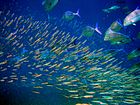 Patricia Fiorelli, public affairs officer with the New England Fisheries Management Council, said they expect approval from the National Marine Fishery Service on the new quota as soon as possible and it will be implemented in 2013.
Patricia Fiorelli, public affairs officer with the New England Fisheries Management Council, said they expect approval from the National Marine Fishery Service on the new quota as soon as possible and it will be implemented in 2013.
Fiorelli also said the Council last week officially decided to examine catch limits for the Atlantic Herring Fishery for river herring, which applies to Alewife and Blueback herring. “Because those species, which are managed, are in declining numbers, we will put some kind of limits on what can be taken by the Atlantic Herring Fishery,” she said. Read more here






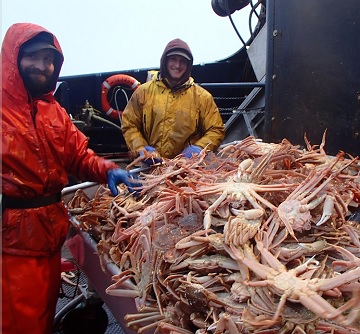
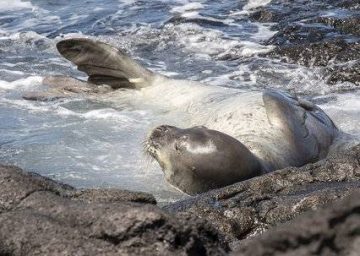 An endangered Hawaiian monk seal has died after wandering into a net pen and becoming trapped at a fish farm that was partially funded by the National Oceanic and Atmospheric Administration in Hawaii. Officials with NOAA said Thursday the death of the 10-year-old monk seal happened at Blue Ocean Mariculture, the same fish farm that NOAA’s National Marine Fishery Service has been using for research in conjunction with a plan to expand aquaculture into federal waters around the Pacific. Ann Garrett, the service’s assistant regional administrator for protected resources, confirmed the farm was the same one used for the NOAA-funded research, but could not comment further on the agency’s involvement. NOAA is working on a plan to expand aquaculture into federals waters despite concerns by some environmental groups who say the industrial-scale farms could do more harm than good to overall fish stocks and ocean health.
An endangered Hawaiian monk seal has died after wandering into a net pen and becoming trapped at a fish farm that was partially funded by the National Oceanic and Atmospheric Administration in Hawaii. Officials with NOAA said Thursday the death of the 10-year-old monk seal happened at Blue Ocean Mariculture, the same fish farm that NOAA’s National Marine Fishery Service has been using for research in conjunction with a plan to expand aquaculture into federal waters around the Pacific. Ann Garrett, the service’s assistant regional administrator for protected resources, confirmed the farm was the same one used for the NOAA-funded research, but could not comment further on the agency’s involvement. NOAA is working on a plan to expand aquaculture into federals waters despite concerns by some environmental groups who say the industrial-scale farms could do more harm than good to overall fish stocks and ocean health. 


























